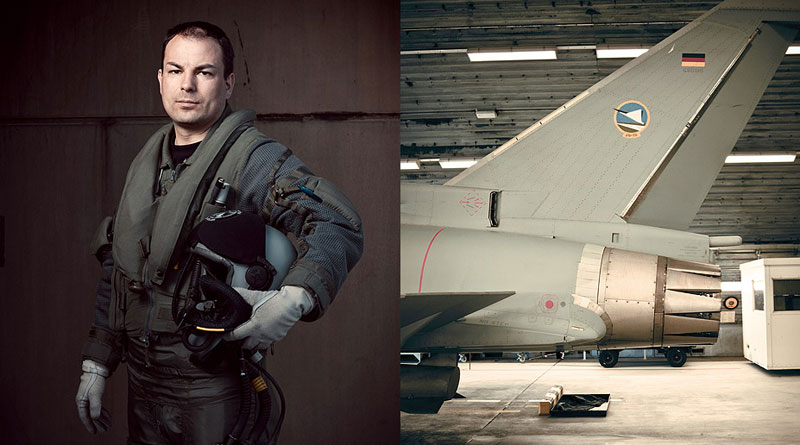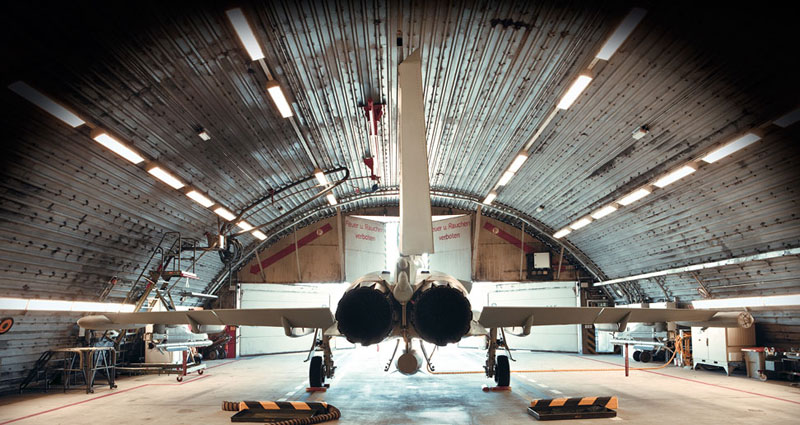|
This morning was like a picture book of Neuburg on the Danube in Bavaria. Over the airbase Zell sun begins its slow ascent into the cloudless blue sky. Suddenly, the silence broken by a sharp wake-up call, forcing her ears. The acoustic signal actuates a lot of manipulation, planned in minute detail and practicing thousands of times. A few minutes later two aircraft Eurofighter race on the runway every few seconds and go up into the sky.
Two jets from the Rapid Response Alert (QRA) - Fighter Squadron 74. This is the name of two aircraft interceptors, which are ready to fight the clock and be lifted into the air in the shortest possible time. Their duty is to protect the sovereignty of its airspace on their territory. If commercial aircraft are behaving suspiciously and do not go to radio, or when a small plane wandered into the air, which is declared a restricted area of the state, one of two groups of the German Air Force interceptors will be lifted into the air in order to clarify the situation. Pilots establish eye contact, hold the identification of the aircraft and assess potential problems.
In order to ensure the operations of about 50 people are in a constant state of readiness around the clock, 365 days a year. The group includes pilots, engineers, firefighters and medical team, as well as staff towers and radar systems management. "Tango-ups," as the German Luftwaffe called concern for the practice - held twice a day. Thomas Koller flew hundreds of them. As commander of a rapid response team, T. Koller is responsible for planning, preparation and readiness of fighter squadron 74. He was one of the first four pilots Squadron, retrained for piloting Eurofighter-new generation aircraft, launched into a series in 2006. Eurofighter was the beginning of a new era in the history of Squadron 74. It replaced the F-4F Phantom, which were in use in the Luftwaffe in 1970.
This morning it was "two tango takeoff» Eurofighter, which held in the air for several hours. In the case of this anxiety, it becomes the "Alpha-off" that occurs on average three times a month. "Everything happens very quickly, and we often do not have time to learn what our mission when we are in the air," - says Koller. Eurofighter can be caused by different reasons. This may be a commercial flight pilot is not able to respond to radio communications. "One day, the MiG-29, who participated in the airshow, lost control of navigation. Rapid response team took off, caught him and escorted him to Neuburg, where the pilot managed to land "- recalls Collier. But in the minds of the pilots is always a worst-case scenario, for example, a commercial airliner hijacked by terrorists.
Therefore, even in peacetime aircraft Eurofighter always fly with machine guns and rockets, "air-air". When two Eurojet 200 engines run at full capacity, the ground literally shakes a few hundred meters away. After a few seconds jets reach 300 km / h, take off and just go off the top of a vertically like a rocket. In an emergency, flying at twice the speed of sound, they can reach any point in German airspace for about 30-40 seconds. Up to 1000 km \ hour congestion 9G-all these figures are high demands and to the pilot, and his outfit. No wonder IWC watches are all pilots Eurofighter.
The pilot in the Eurofighter is not only busy running. Unlike the F-4F Phantom II, which consists of a two-person crew, the new Eurofighter-single aircraft. "This means that the pilot is also responsible for weapons, '" explains-Koller. It tests the avionics and at the same time developing and implementing a strategy of engagement. Even during training flights have a little time to enjoy the fact that around. Pilots constantly work to improve their flying skills. Pilots regularly confirm their qualification, which enables them to perform such maneuvers as night flights or in-flight refueling. "The flight to the Eurofighter has the tactical situation assessment and an overview of the situation in the air while you are racing on the sky at a speed of more than 1000 km / h, "Collier concludes.
.jpg)


|
